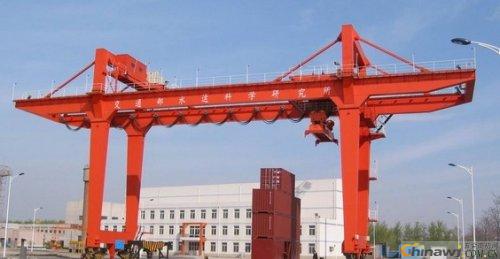Over time, hoisting machinery has accumulated a vast amount of mechanical technical information. However, many people still lack a comprehensive understanding of the overall structure and working principles of certain lifting equipment. In response to this need, Puqi Auto Repair School provides a detailed introduction to crane systems.
One of the most significant differences between cranes and other types of machinery is the combination of large, movable metal structures with multiple mechanisms. Factors such as intermittent operation, uneven load distribution, inconsistent movement of various parts, and multi-person coordination significantly increase the complexity and safety risks associated with cranes. Additionally, the potential danger range is wide, making crane safety a top priority due to the high risk of accidents and their severe consequences.
First, let's look at the operating system. Cranes achieve material handling through either a single mechanism or a combination of multiple mechanisms.
1. The **rotating mechanism** allows the boom to rotate around the vertical axis of the crane, enabling material transport in a circular area.
2. The **luffing mechanism** is unique to boom-type cranes. It adjusts the height and length of the boom, thereby changing the working range.
3. The **traveling mechanism** moves the crane or the lifting trolley. It can operate on tracks or without them and is categorized into self-propelled and traction types based on the driving method.
4. The **hoisting mechanism** is responsible for lifting materials vertically. As an essential part of all cranes, it is the most fundamental and critical mechanism.
The four main working mechanisms of cranes are: hoisting, traveling, luffing, and rotating.
Second, the **drive system** powers the working mechanisms. Common drive types include electric, internal combustion engine, and manual drives. Electric drive is widely used in modern cranes due to its efficiency and environmental benefits. Most rail-mounted cranes, elevators, and similar equipment rely on electric power. On the other hand, mobile cranes like truck cranes and crawler cranes often use internal combustion engines. Manual drives are occasionally used in small lifting devices or as backup during emergencies.
Third, the **lifting device** is driven by the drive system, working mechanisms, and control system. Through the control system, the drive converts energy into mechanical motion, allowing the working mechanisms to perform tasks efficiently. The entire metal structure connects all components, forming the complete crane system and defining its working principle.
By explaining the structure of hoisting machinery from three key perspectives—operating system, working mechanisms, and drive system—we aim to enhance your understanding of cranes. Whether you're a student, technician, or industry professional, gaining insight into these systems will help you better manage and maintain lifting equipment safely and effectively.


Freight Elevator,Heavy Duty Cargo Lift,Freight Lift Elevator,Vertical Cargo Lifts
APSL ELEVATOR TECHNOLOGY(SUZHOU) CO.,LTD. , https://www.fujiapsl.com